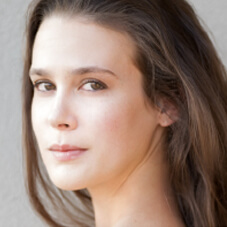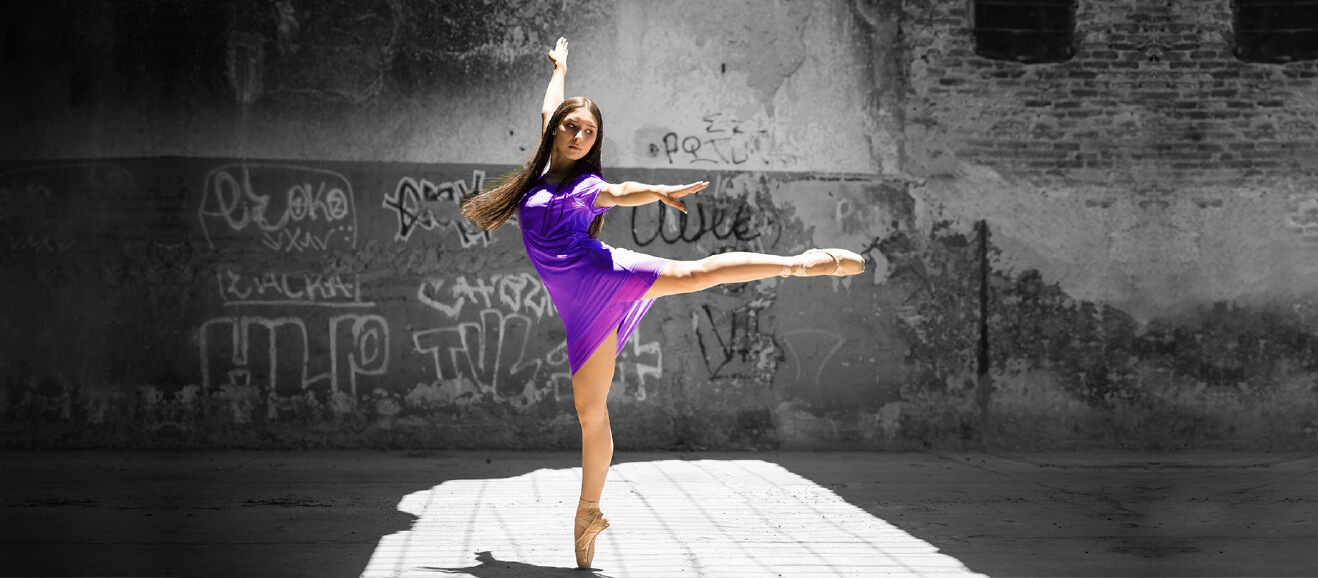PBT
PROGRESSING BALLET TECHNIQUE
WHAT IS PBT?
Progressing Ballet Technique (PBT) is an innovative body-conditioning and strengthening program that has been designed to enhance students’ technique in all forms of dance by focussing on training the muscle memory required in each exercise in all forms of dance.
PBT helps teachers around the world prepare their students to receive the strength they need to achieve their personal best. It is an innovative program that helps students with core strength, weight placement and alignment.
The program helps with injury prevention and rehabilitation and enhances the ability of athletes to perform at their best. It can be difficult for students to feel which muscles initiate the correct alignment in training. However, with the use of an exercise ball, the students gain a great sense of posture and weight-placement whilst feeling each correct muscle group working throughout each exercise, which then stays with them whilst performing.
PBT focuses on core strength. weight placement and alignment of the body with a gradual approach of carefully designed exercises and repetitions of these exercises that trigger their muscle memory. The program is designed with safe dance methodology to promote a long, healthy career. PBT is now being taught by over 6000+ certified teachers worldwide and over 4500 schools globally have added PBT classes in their curriculum for students.
PBT is not only a program to improve technique in ballet dancers. it is now being appreciated and incorporated in training by all forms of dancers. athletes. physiotherapists and even footballers!
ABOUT THE FOUNDER - MARIE WALTO-MAHON
Marie’s former ballet training was in Newcastle Australia passing all RAD examinations including Honours in Advanced and the Solo Seal award in 1970. In 1971, she continued her studies in France with a scholarship at the Rosella Hightower School In Cannes before being offered a professional contract to join Les Ballet de Marseille, under the artistic direction of Roland Petit. The company toured to Paris with the Iate great Maya PIisetskaya.
“I was asked by Maya Plisetskaya to join her while she practiced a particular floor barre before classes. I noticed her setting up her mind and body before class each day and I noticed when doing this myself, I performed better. This experience instilled in me the hunger r to learn more about the importance of the dancers’ body and their preparation to perform at a high standard and maintain a healthy body.”

THE STORY BEHIND PBT
Marie’s personal career was cut short in 1973 when her father suffered a heart attack and she was required back home in Australia. She then opened up her own school in 1974.
“I found a new passion in teaching and assisting every child to obtain their personal best in training. I studied books in anatomy and in 1979 trained with Valerie Greig who wrote the book, Inside Ballet Technique, that inspired my continual learning with innovative teaching styles.”
During the 1980’s, many graduates from her school were taking up positions in prestigious Pre-Professional schools and positions in acclaimed ballet companies. In the mid 90’s she commenced working with a group of 10-year-old students with the use of stability balls and after only 3 months the students became so aware of their posture, alignment and weight-placement that it encouraged Marie to explore more exercises around the concept of removing the floor and setting up the proprioception in the mind and body, ready for the classroom.
In 2005 Marie experimented with these exercises, which created the foundation for the PBT program, with a 16-year-old male dancer, Daniel Roberge, who had no former ballet training. He was instructed to practice PBT daily alongside ballet classes in order for him to display the improvement. He improved so much that in 2007, two years after his first ballet lesson, he sat for all senior ballet examinations and was awarded the silver medal at the Genèe International Competition in Singapore. The next year, Daniel signed a contract with Washington Ballet. Marie acknowledges that nothing takes the place of good ballet training, however, convinced that alongside ballet training, PBT accelerates technique.
In 2012, Marie was tutoring teachers for the Royal Academy of Dance, showing the teachers a couple of exercises to improve the students’ alignment and stability. It was at this course that the teachers requested Marie to film all of her work and share her findings. Three DVDs and an online training program later, Progressing Ballet Technique’s teacher training courses sell out around the globe and is being officially taught in thousands of schools across 40 countries.
PHYSIOTHERAPIST ANALYSIS OF PBT
Author: Debra Crookshanks APAMBAppScPhysiotherapy(
USyd). Grad-DipManipTher (USyd) Physiotherapist for Dancers & Performing Artists Anatomy Consultant PBT References: Quin E, Rafferty S, Tomlinson C (2015): Safe Dance Practice. Human Kinetics. Champaign, II. Welsh, T (2009): Conditioning for dancers. University Press of Florida.Gainesville, Fl. PBT website: accessed 30 July 2020. https://pbt.dance/home/about
Progressing Ballet Technique (PBT) is a unique training system using ballet technique-specific exercises to train skill acquisition in a graded and progressive manner from junior through to advanced levels.
The PBT program enhances the process of skill acquisition, defined by Quintal 2019. pp 255 as ‘the process of learning and developing a new ability through instruction and practice’, and that of motor learning ‘the process of learning and improving the new movement actions through practice and experience· (Quinetal 2079, pp 253).
PBT teaching refers to this learning of a new skill via ·muscle memory while acknowledging that while skills acquisition might require the strengthening of certain muscles at certain joint angles. the processes that are important for learning and memory of new skills occur mainly in, the brain. The predominant areas of the brain involved in ‘muscle memory include the motor cortex the basal ganglia and the cerebellum, along with the afferent and efferent neural systems in the periphery.
Dancers must optimize a number of physical capacities to achieve their dance, goals efficiently. Good alignment is sometimes called placement. PBT works for correct alignment through all exercises. at all levels.
Coordination: the nervous system and the muscles that execute and control movement must collaborate to accomplish the skilful movements that dance requires. This neuromuscular co-ordination contributes to muscle memory a cornerstone of the PBT program.

Flexibility:
dancers are required to move their joints through the full range of movement required by the choreography. Careful. dynamic stretching is an important component of PBT

Strength:
is actually three related capacities – muscular strength (the maximal amount of force a muscle or muscle group can generate). muscular endurance (movements required by choreography repeated without fatigue) and power (a combination of force and speed). PBT progressively builds towards each of these with increasing repetitions. increasing level of difficulties and increasing force & speed.

Aerobic capacity:
while an advanced PBT class may result in elevated breathing, heart rate, and sweating it cannot be claimed PBT enhances cardio-vascular capacity per se until further research into the PBT program is completed.
PBT also follows the 3 principles of conditioning:
- Adaptation and reversibillity
- Specificity
- Progressive overload
The first principle of physical conditioning. adaptation, explains how ‘when the human body is challenged repeatedly, it gradually develops the capacity to manage that challenge, also known as the overload principle in exercise physiology.
This overload is inherent in the progressive challenges to the dancer’s bodies as they work through the beginner, intermediate then advanced levels of the PST program. Overload is challenged further by the addition of the equipment used in PBT including the exercises ball, pilates ball. bosu and resistance bands. When we challenge our bodies they grow stronger (Welsh 2009 pp 14).
Adaptation has a direct corollary called reversibility {Welsh 2009. pp 14 ). If we stop working a capacity, that capacity will diminish or become weaker. Dancers a, reencouraged to continue PBT even when away from the studio to maintain all capacities to an acceptable level ‘use it or lose it ‘.
The second principle of conditioning, specificity, holds that the exercise needs to closely match the specific ability you are trying to build. All PBT exercises have the goal of improving a specific element of balletic technique.
The third and final principle of conditioning is progressive overload. Our capacities will expand fastest when the challenge is increased progressively’ (Welsh 2009. pp 161. A sudden increase in demand will load the body too quickly and this is when injury may occur. There is strong evidence in the dance & sports medicine literature supporting a gradual increase of load during the dancer or athlete’s training cycle. Sudden increases inload can occur after returning from a break, during dance intensives and when rehearsing or performing adds longer hours. shorter breaks and increased demands on the dancers. PBT classes are structured to avoid any sudden overload as the dancer trains.
PBT has also taken into consideration those dancers with joint hypermobility (GJHSI. those with genu recurvatum (hyperextended knees also known as sway back legs). have a dynamic (postural) or structural scoliosis. tibial torsion and neural challenges eg Chiari malformation. All PBT exercises can be modified to meet the needs of each individual dancer.
Progressing Ballet Technique (PBT) is an innovative body- conditioning and strengthening program developed by Marie Walton – Mahon for students to understand the depth of training muscle memory in achieving their personal best.
ENDORSEMENTS

Progressing ballet technique is a unique and essential approach to the art form that is ballet. For the longevity, safety, knowledge and preservation of the art, to come across progressive ballet technique is visionary and something all young dancers should be aware of and I urge them to embrace this revolutionary support system.
STEPHANIE WILLIAMS
American Ballet Theatre

” Wow! The results from the Progressing Ballet Technique workshop are amazing! Concepts that were difficult for my students to understand, for example engaging their core whilst keeping freedom in the upper torso and arms, have become so easy for them to feel now. Magical penny drop moment – so that’s how you do it! A Brilliant investment
NATALIE ROCERS
PrincipaI of Bojangles Dance Sydney.

Progressing Ballet Technique is of real benefit to dance students. The effective exercises will strengthen their core stability, muscle control, balance, and help their dancing.
LI CUNXIN
Artistic Director – Queensland Ballet
Former PrincipaI Dancer – Australia Ballet
Former Principal Dancer – Houston Ballet
Best selling autobiography ‘Mao’s Last Dancer ‘

PBT is Revolutionary! Marie Walton Mahon is one of the great pioneers of our time. She is paving pathways and charting territory unseen in Dance Medicine. She is truly reinventing dance conditioning and fine-tuning the dancer’s bodies like never seen before! PBT sharpens technical precision so that the dancer can achieve more than they have ever imagined.
TINA SFERRA, MSPT
Owner Elite Performance Physical Therapy







